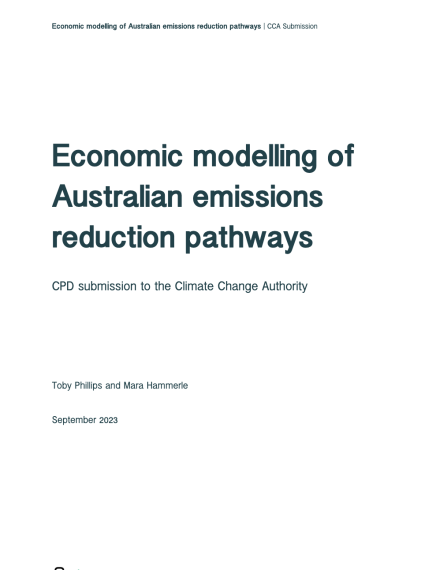Economic modelling of Australia’s emissions reductions pathways is a submission by the Centre for Policy Development to the Climate Change Authority’s consultation on this topic.
Written by Dr Mara Hammerle and Toby Phillips, it is part of the work of the Sustainable Economy Program.
It responds to the Climate Change Authorities requests for recommendations as illustrated below.
1. The CCA should include an additional modelling question: “What are the likely impacts on Australian households, as well as on different types of households, for different emissions pathways to net zero?”
2. Economic modelling by the CCA should consider the impacts of the net zero transition on macroeconomic outcomes (like inflation and employment) both in the short and long run.
3. The CCA should model changes in both domestic emissions and global emissions that arise from efforts to decarbonise Australia’s economy.
4. The CCA should incorporate analysis of the impacts of physical risks from climate change.
5. CCA analysis should include distributional implications for different household groups (using either GTEM or other models).
6. CCA analysis could use macroeconomic models to examine inflationary impacts.
7. The CCA could use a “disorderly” transition scenario by the Network for Greening the Financial System to model a low ambition global emissions pathway.
8. For domestic emissions scenarios, the CCA should model four possibilities: (1) current ambition; (2) 1.5°C of warming; (3) Australia as a green export “superpower”; and (4) the fastest possible “warp speed” renewable deployment
9. The CCA should use a social cost of carbon to reflect costs arising in scenarios with slower emissions reductions.
10. CCA economic modelling should reflect a high probability of extremely quick declines in technology costs for renewables.
11. Modelling should assume a relatively lower cost-of-capital in scenarios where Australia decarbonises faster, compared to a less ambitious decarbonisation scenario.




